Wild animals must cross our roadways during seasonal migrations to find food and water. We cannot always anticipate the actions of wildlife crossing a road, but we can be better prepared for encounters by learning about wildlife behavior and driving defensively.

Tips to avoid wildlife/vehicle collisions:
- Be especially alert at dawn and dusk.
- Heed wildlife crossing signs. These signs are usually placed in areas known to have a high volume of wildlife/vehicle collisions.
- Be alert on roadways near wooded, agricultural and wetland areas and also near lakes and streams.
- Scan both sides of the road as you drive. Invite passengers to help watch for wildlife.
- Do not drive distracted. Put away food, phones and other distractions.
- When possible, use high-beam headlights to better illuminate the road.
- Look for an animal’s eyeshine, which can be seen from a distance. Slow down once you have spotted an animal near the roadside.
- Some animals travel in groups, so be sure to watch for additional animals if you see one.
- Do not throw trash out of your vehicle. Not only are there penalties for littering on a highway, but trash and food scraps can also draw animals to roadways.Do not throw trash out of your vehicle. Trash and food scraps can draw animals to roadways.
See an animal near the road? What to do:
- Do not swerve for a deer or small animal. Stay in your lane and slow down.
- If several animals are standing in the road, do not try to drive through them or get out of the vehicle to chase or herd them. Honk your horn and flash your lights to encourage them to move on.
- If an animal has just crossed the road, continue to drive slowly and be cautious because it may try to cross again.
If you hit an animal:
- Pull off the road and use your hazard lights if your car is undriveable.
- Do not try to approach an injured animal.
- Call 911 or contact your local police department if you were injured or if the animal is in the roadway and could pose a threat to public safety.
See also instructions for dealing with wildlife carcasses on Utah roads.

